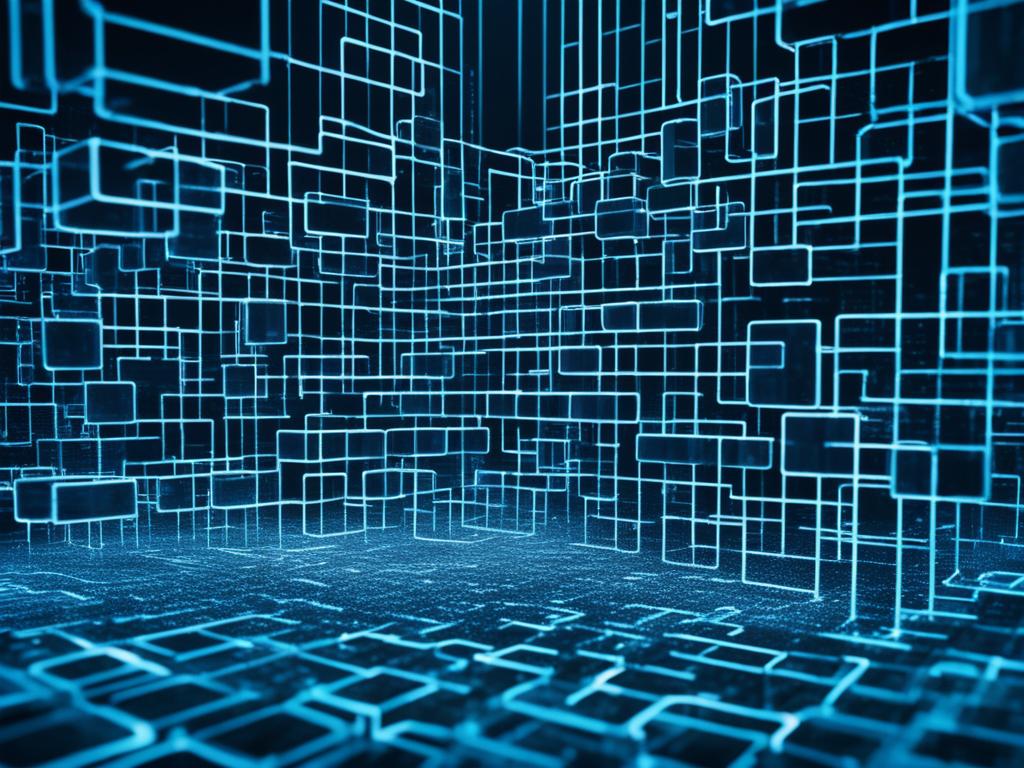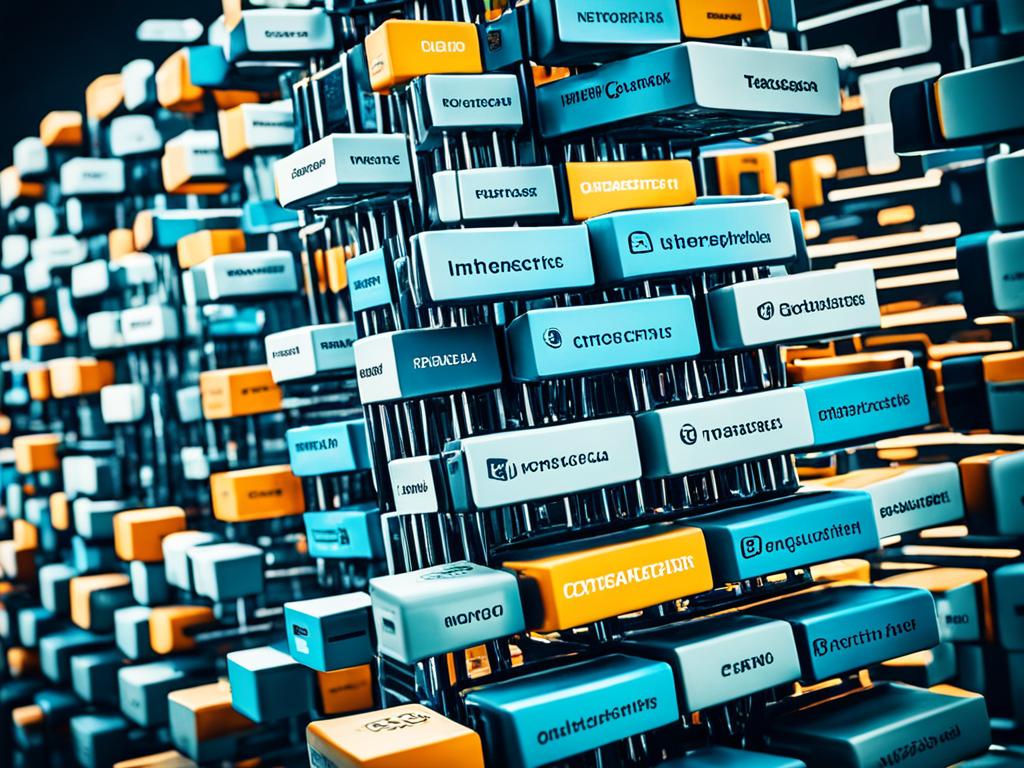
All to Know About Blockchain
Blockchain is a new way to keep records that’s changing the digital world. This guide will cover its beginnings, main ideas, and the tech behind it. You’ll learn about cryptography, how groups agree on things, and smart contracts. This guide will help you understand how blockchain makes transactions safe, open, and fair across many areas.
It talks about how Bitcoin and Ethereum started and how blockchain is used in things like tracking goods, health care, and government work. This article will show you the big changes blockchain brings. Get ready to see how it’s changing our view of the digital world and its huge potential for the future.

Blockchain: The Revolutionary Technology Shaping the Future
Blockchain is changing the game in the tech world. It’s a new way to keep records that could shake up many areas, like finance, healthcare, and supply chain management.
What is Blockchain?
It is a secure digital ledger that keeps track of transactions and data across many computers. It’s different from old databases because it’s spread out among a network of nodes. Each node has the whole history of transactions, making sure the data stays safe and unchanged.
The Origins of Blockchain
It started in 2008 with Bitcoin, but it’s grown way beyond just money. It’s now changing the game in finance, supply chain, and healthcare. This is because it makes transactions safe, open, and fair.
- The blockchain’s network is kept up by nodes, each with all the transaction history.
- This setup keeps the data safe and unchanged, stopping anyone from messing with it.
- Now, blockchain is used in many areas, not just in cryptocurrencies. It’s in finance, supply chain management, and healthcare.

Blockchain is changing how we handle data and trust each other. It makes transactions safe, open, and fair. As it keeps getting better, it will likely change many industries in big ways.
Decentralization: The Core Principle of Blockchain
Blockchain’s technology stands out because it’s decentralized. Decentralization is key to its security, transparency, and strength. It removes the need for a single authority. This lets users talk directly to each other, cutting out middlemen.
Data in a blockchain network isn’t kept in one place. It spreads out across many nodes. This means the network keeps going even if some nodes fail or go offline. It’s a setup that keeps the blockchain safe and unchanged, catching any data changes right away.
- Decentralization cuts out the need for a single boss, building trust and openness.
- Blockchain’s spread-out design makes it more secure and tough, with no weak spot.
- Decentralization lets users talk directly, skipping middlemen.
Switching to decentralized systems changes the game in many fields, like finance, supply chain, healthcare, and government. As more businesses and groups see the value of decentralization, they find new ways to innovate, work better, and build trust.

Understanding decentralization helps us see how blockchain can change the way we handle data and make transactions. It’s a big deal for shaking up old ways.
Cryptography and Consensus Mechanisms: The Foundations of Trust
Blockchain’s technology relies on cryptography and consensus mechanisms for trust. These elements work together to keep blockchain transactions safe and transparent. This makes blockchain a secure place for many uses.
Cryptographic Hashing and Digital Signatures
Blockchain uses cryptographic techniques like hashing and digital signatures. Hashing turns data into a fixed-length code, like a digital fingerprint. This code checks if the data is real and unchanged. Digital signatures let users prove they sent a transaction, keeping it safe from changes or denial.
Consensus Protocols: Ensuring Network Integrity
A consensus mechanism keeps the blockchain’s network safe. These algorithms help nodes agree on the ledger’s state, a process called consensus. Proof of Work (PoW) and Proof of Stake (PoS) are two main types. PoW, like Bitcoin, uses miners to solve puzzles to validate transactions. PoS, like Ethereum, gives validation power to nodes based on their cryptocurrency amount. These methods keep the network secure and stop one person from controlling it.
| Consensus Protocol | Description | Key Characteristics |
|---|---|---|
| Proof of Work (PoW) | Miners compete to solve complex cryptographic puzzles to validate transactions and add them to the blockchain. | Secure but resource-intensiveProne to 51% attacksUsed by Bitcoin and other early cryptocurrencies |
| Proof of Stake (PoS) | Validators are chosen based on the amount of cryptocurrency they hold, and they validate transactions by staking their coins. | More energy-efficient than PoWLess susceptible to 51% attacksUsed by Ethereum (Ethereum 2.0) and other newer blockchain networks |
By using cryptography and consensus mechanisms, blockchain makes transactions secure, transparent, and unchangeable. This opens up a new era of trust and teamwork in many industries.

Smart Contracts: Automating Business Processes
Blockchain’s technology has brought us smart contracts, a game-changer for businesses. These digital agreements automate many processes and make transactions smoother across different industries.
The Power of Smart Contracts
Smart contracts are digital deals that run on blockchain. They automatically enforce the contract’s terms, cutting out middlemen and lowering the chance of errors.
Smart contracts make business processes automatic. They turn contract terms into a digital code. This means actions like transferring money or assets happen without human help. This automation boosts efficiency, cuts costs, and makes things more transparent in many fields.
| Industry | Application of Smart Contracts |
|---|---|
| Finance | Automated loan processing, securities trading, and insurance claims management |
| Supply Chain Management | Streamlined tracking and verification of goods, automated payments, and dispute resolution |
| Real Estate | Secure and transparent property transactions, rental agreements, and property management |
Smart contracts do more than just automate. They can handle complex situations like conditional payments and multi-party deals. As blockchain grows, so will smart contracts, changing how businesses work and improve their processes.

Applications of Blockchain Technology
Blockchain’s technology has grown a lot since its start. It’s now used in many areas, like finance, supply chain, and healthcare. This tech is changing how we do things in these fields.
Blockchain in Finance: Cryptocurrencies and Beyond
Cryptocurrencies like Bitcoin and Ethereum are big examples of blockchain use. They offer secure, open, and clear transactions. But blockchain does more than just that in finance.
It’s being used for things like international payments, trade finance, and managing assets. This makes things more efficient, cuts costs, and makes transactions clear.
Blockchain in Supply Chain Management
It is changing supply chain management a lot. It keeps track of goods and information securely. This helps with tracing items, fighting fake products, and making supply chains run smoother.
It’s used in farming, making goods, and logistics. This tech helps with managing stock, checking if products are real, and working better with partners in the supply chain.
Blockchain in Healthcare and Government
Healthcare and government are also using blockchain. In healthcare, it keeps medical records safe and lets doctors share information easily. In government, it makes public records clear, makes admin tasks easier, and helps with secure voting.
As more people use it, we’ll see even more ways it changes things. Its ability to be versatile and secure makes it a key tool for solving problems and driving new ideas.
Conclusion: Embracing the Blockchain Revolution
Blockchain’s technology is changing the way we live and work. It uses special rules to make things secure and fair. This tech is set to change many areas like finance, supply chain, healthcare, and government.
Blockchain’s future looks bright, with more trust, transparency, and efficiency in our digital world. We need to keep up with new developments and see the big chances it offers.
For business leaders, policymakers, or anyone wanting to use blockchain, now is the time to act. By using blockchain, we can make things better, build trust, and open new doors in many fields.
FAQ
What is blockchain?
It is a digital ledger that records transactions securely and transparently. It’s the tech behind cryptocurrencies like Bitcoin. But, it has many other uses too.
How does blockchain work?
It uses cryptography and consensus to validate transactions. Transactions are grouped into “blocks” and linked together. This creates a secure, transparent record of all transactions.
What is the purpose of blockchain decentralization?
Decentralization is key to blockchain. It spreads the ledger across many nodes. This means no single person controls it, making the network secure and transparent.
How does blockchain ensure security and trust?
It uses cryptography and consensus mechanisms for security. These methods ensure the network’s integrity. They make sure everyone agrees on transaction validity.
What are smart contracts, and how do they work on blockchain?
Smart contracts are digital agreements that automatically enforce contract terms. On blockchain, they automate business processes. This makes transactions faster and more transparent.
What are the key applications of blockchain technology?
It has many uses, like digital payments and supply chain management. It also helps in healthcare, real estate, and voting systems. Its secure and decentralized nature changes many industries.



Nice one